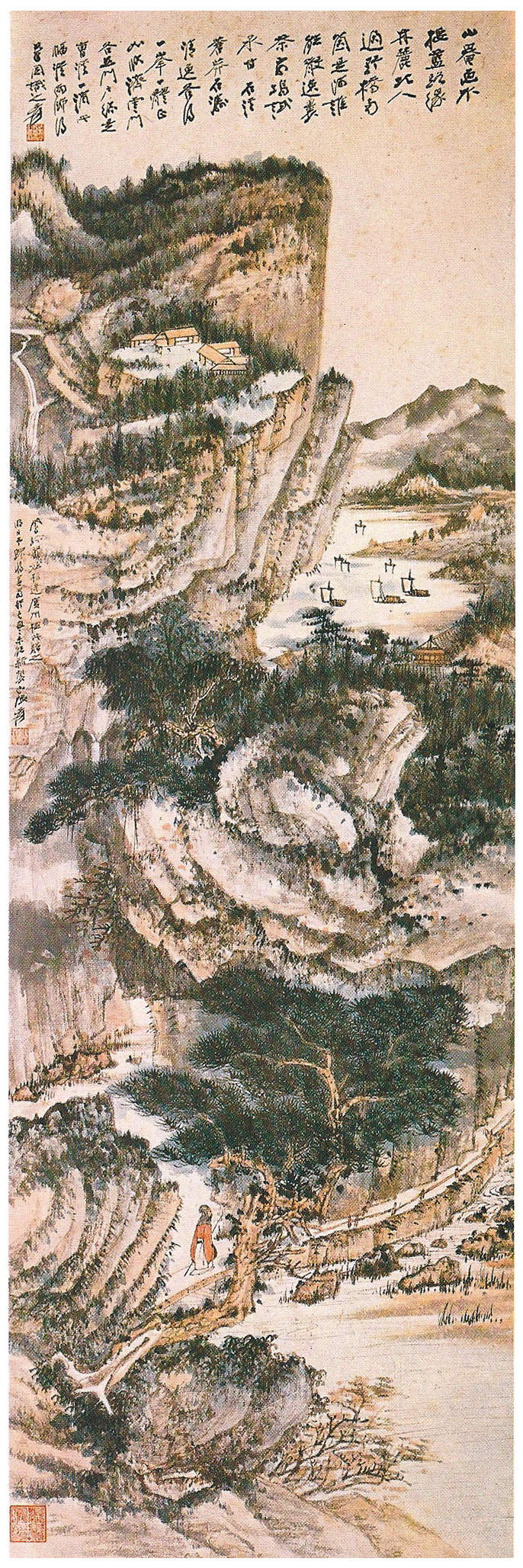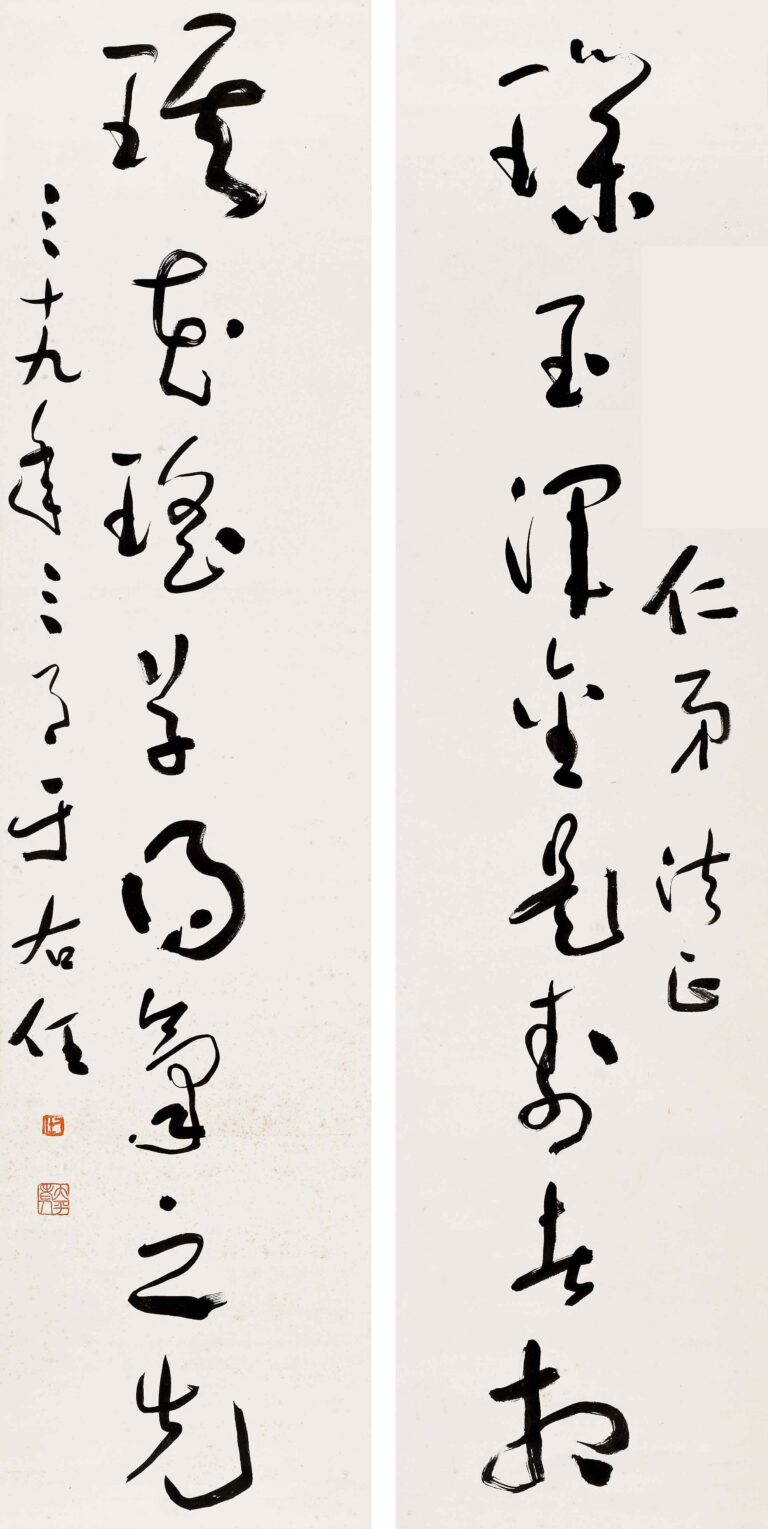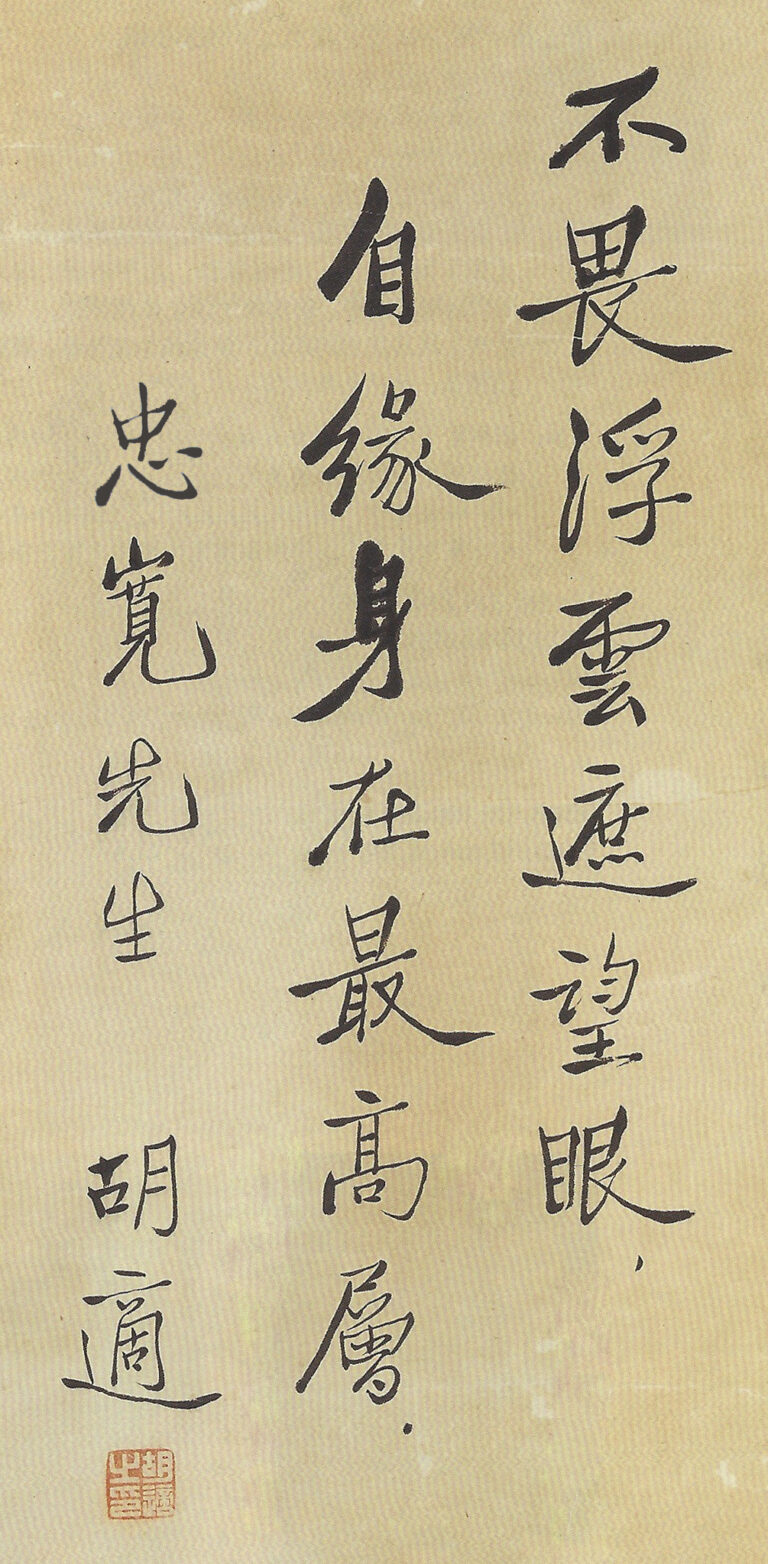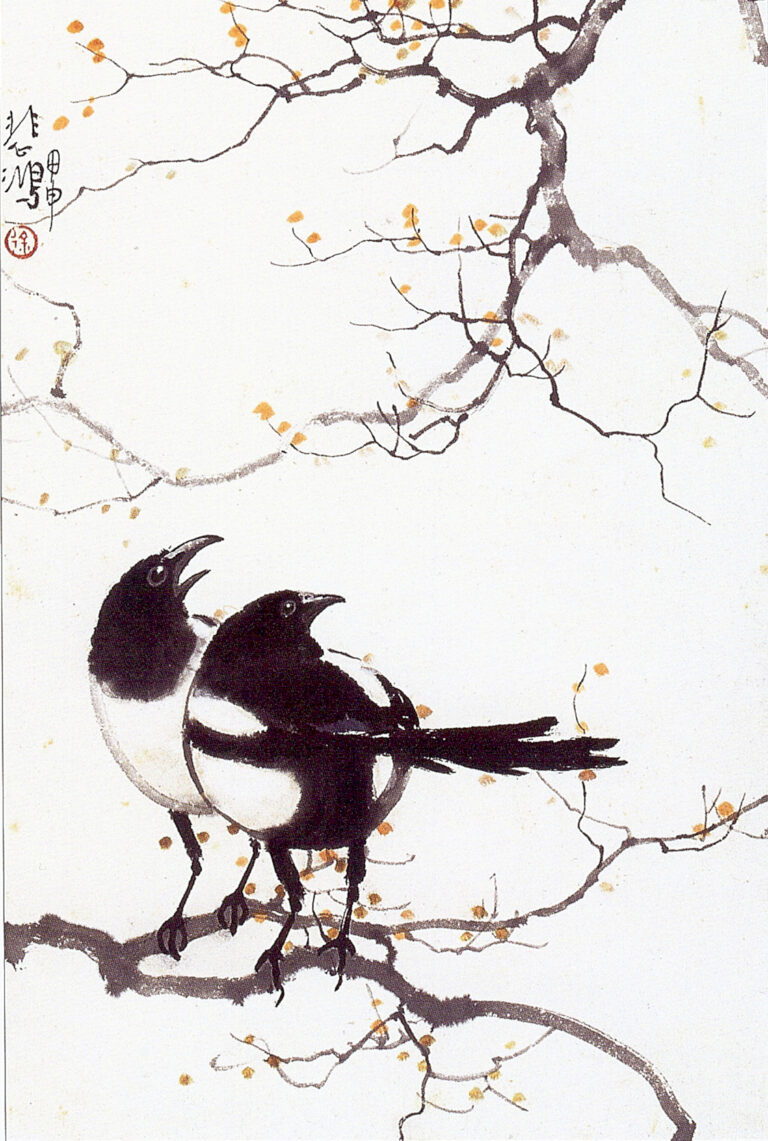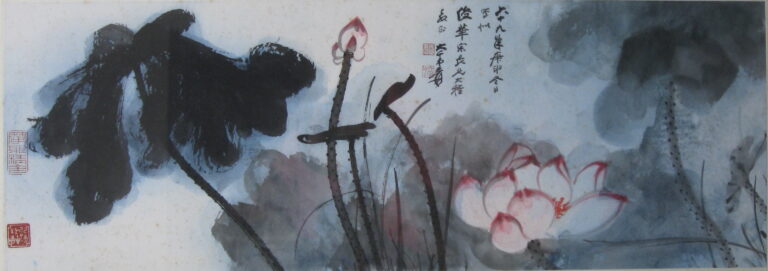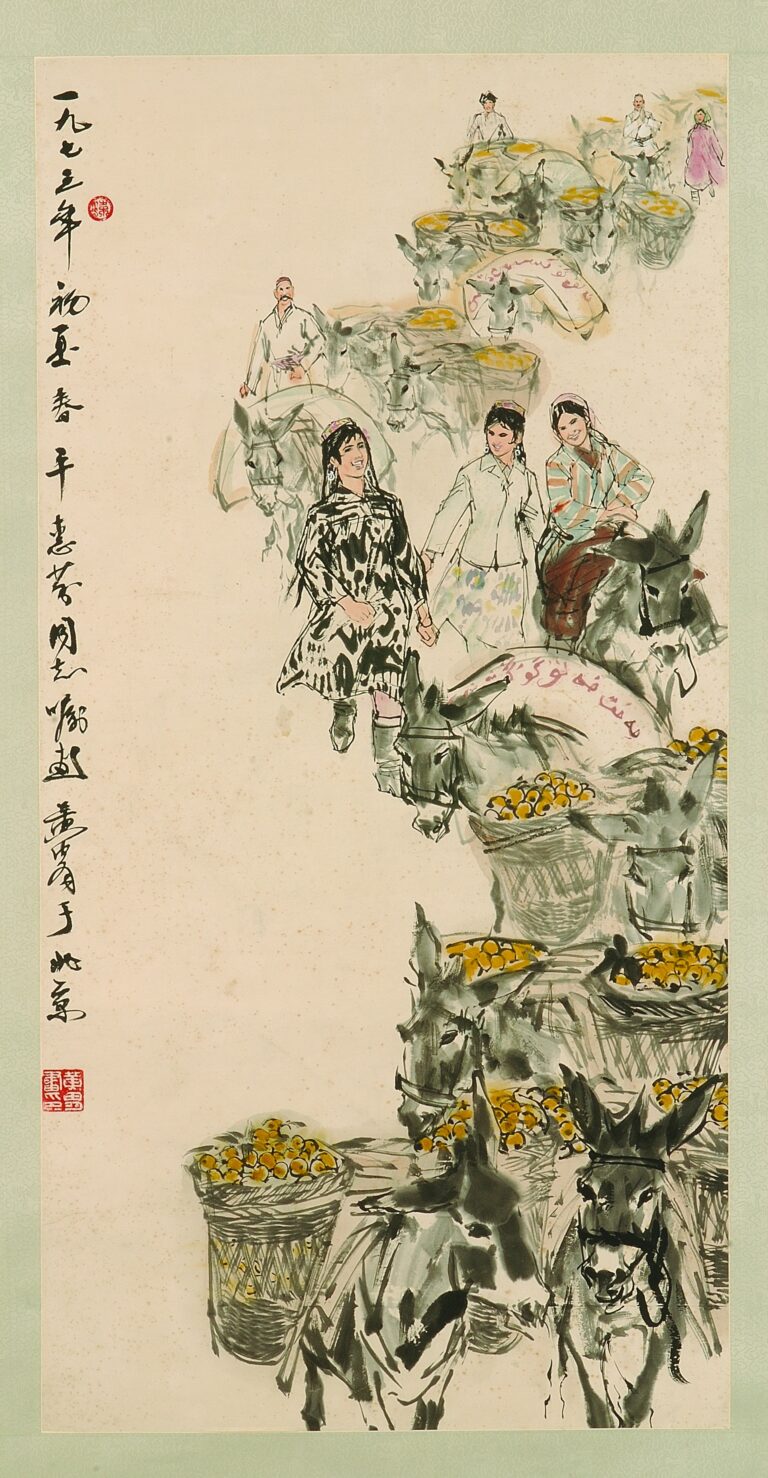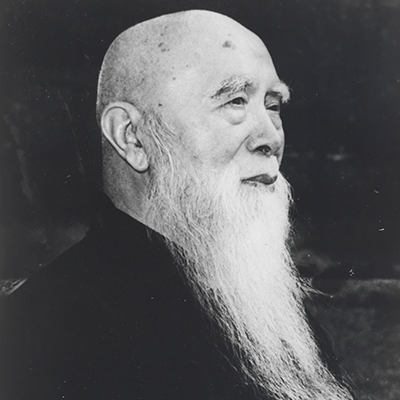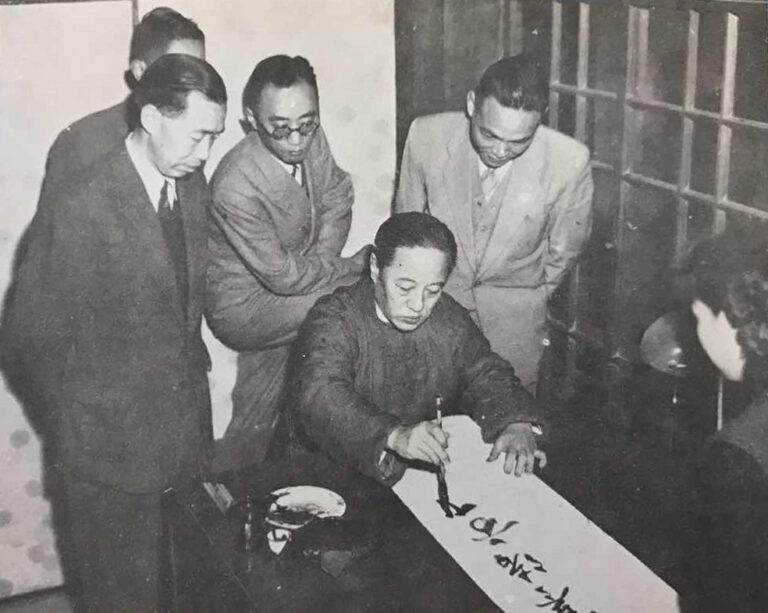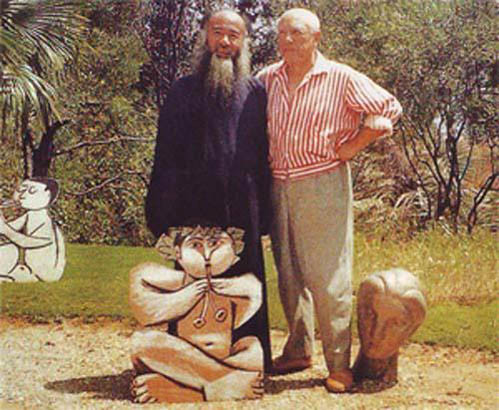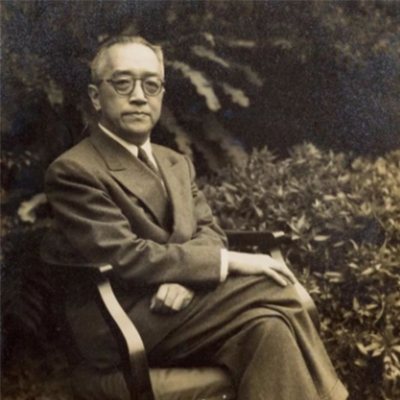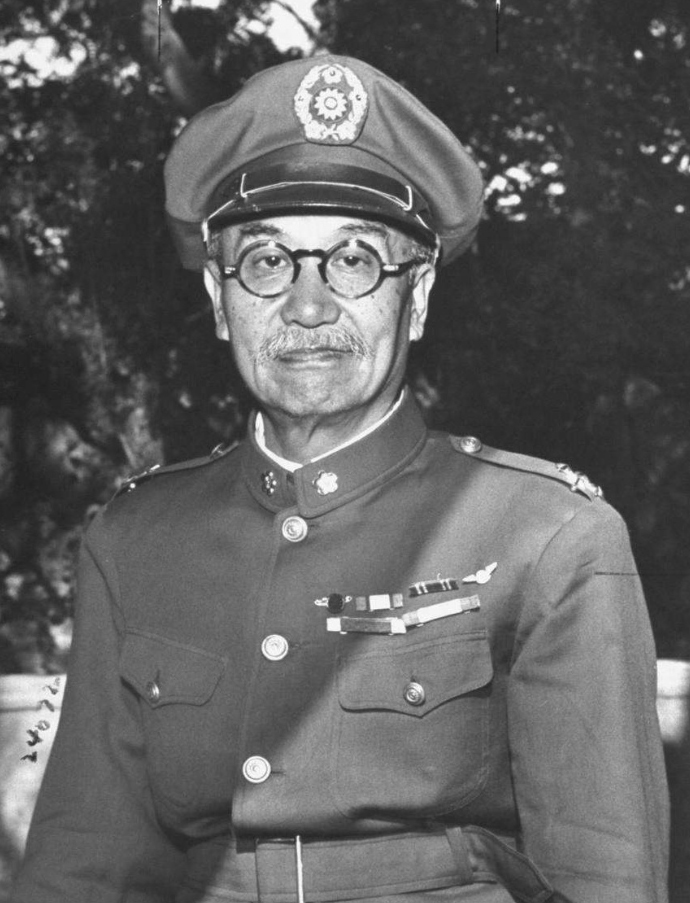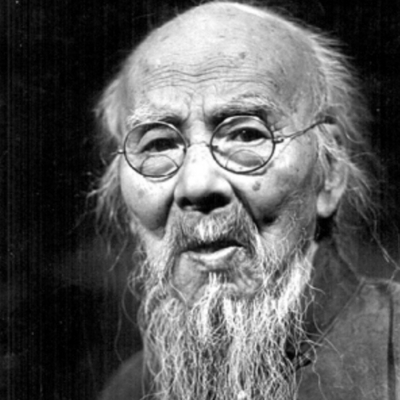Zhang Daqian (1899-1983), Formerly known as Zhang Zhengze, character Ji Yu, number "Daqianjushi", from Neijiang, Sichuan. He has been influenced by his mother Zeng Youzhen since he was a child, and he has a deep background in painting. As an adult, he studied with Zeng Xi and Li Ruiqing in turn, and studied the calligraphy and painting skills of ancient masters such as Shitao and the Eight Dashanren. In 1927, he traveled to the mainland to study and visit mountains, including Huangshan, Emei, Qingcheng, etc., which had a deep influence on his landscape expression.
From 1941 to 1943, he went to Dunhuang Cave to explore and copy murals, drawing on the characteristics of color decoration and composition, and bringing subversive changes to his landscape creation. After living overseas after 1949, he absorbed elements of Western abstract art, especially the "accidental and spontaneous" nature of abstract expressionism, making his painting style more personal and contemporary.
Traditional skills: Stele cracking method and cyan and green heavy color
Zhang's early landscape works were deeply influenced by the methods of axe cracking and hemp cracking in the Song Dynasty. They combined the pen and ink traditions of the Northern Wei Dynasty to the Ming and Qing Dynasties to create a classical landscape with steady pen power and rigorous structure. Inspired by the Dunhuang murals, he used mineral pigments such as stone green, stone green, and vermilion to start the route of heavy green and green color, with strong and beautiful colors and smooth lines, creating a resplendent decorative effect.
Splashing ink and color: Chance dances with poetry
Since 1956, Zhang Daqian has innovatively adopted the techniques of splashing ink and color, that is, randomly splashing ink and paint on paper, so that the color blocks naturally faint, and then using fine pens to write images such as tree stone bridge houses and character boats. This technique combines the ink-breaking techniques of the Tang Dynasty, Dunhuang decorative colors and Western abstract spirit to form a creative realm of "outside reality, the scene of the soul".
In his later years, works such as "Qiushan Lancui", "Junling Bicui", "Yifan Yanyu over Gusu", etc. have repeatedly set high prices, indicating that his ink-splashing skills have matured.
Evolution of technique: from copying to becoming a school of its own
Academic research points out that Zhang Daqian's landscape painting has undergone three stages of evolution:
- Early days (1920s-1940s): Mainly copying the ancients, faithfully reproduces the ancient methods and composition;
- Mid-term (1940s-1950s): Inspired by Dunhuang, the colors tend to be gorgeous, and the gestures become vigorous ;
- Late period (1960s-1980s): The technique of splashing ink and color is mature, the picture is magnificent, and the fusion of color and ink has reached a new level.
Artistic conception: the landscape of the mind
Chinese literati painting emphasizes the integration of "heart view" and nature. Zhang Daqian's landscape is not only a reproduction of mountains and rivers, but also a projection of his state of mind. Splashing ink and color, the works are like flowing clouds, informal, freehand, and contain rigorous tracing and rhythmic connotations, forming a vocabulary of similarity and dissimilarity, reality and reality.
Market value and collection significance
Zhang Daqian is one of the highest contemporary auction record painters. Since 1991, the price of his works has doubled dozens of times. In particular, ink-splashing and color-splashing works such as "Akiyama Lan Cui" sold for HK 港元8,820,000, and "Junling Bi Cui" was about HK 港元3,780,000. Contemporary auction markets show that Zhang's ink-splashing landscape is already the focus of the global art market.
Dehuatang invites you to enjoy and inherit張大千山水作品不僅技法豐富、意境深遠,更是中華藝術的時代縮影。對收藏家而言,它們是藝術珍品,也是文化資產。如您手中珍藏張大千山水佳作,無論是早期的青綠皴法還是晚期潑墨潑彩,德華堂誠摯邀請與您聯絡。我們長期致力於 High-priced acquisition of famous ancient and modern Chinese calligraphy and painting, calligraphy and painting, calligraphy, and letters from celebrities, With professional appraisal and honest valuation, continue to convey their cultural and artistic brilliance. We look forward to working with you to restore these treasures to their historical value and artistic charm, and to shine in the new era.
